Cigarettes and spoons: Christmas gifts from years ago
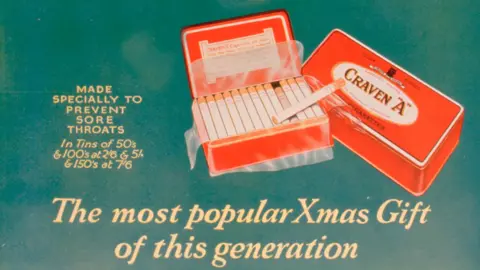 Print Collector
Print CollectorIt's not always easy to pick the perfect gift for that special someone - but brands know how to convince the Christmas shopper to open their wallet, suspend their parsimony and shell out on luxuries and "must haves".
However, some of these advertisements of the past might not have pulled upon our heart - or purse - strings as much as current campaigns (unless ladies back then were more into cutlery than perhaps they are today).
Take this stroll down memory lane to the days when gentlemen would delightedly rip open a pack of cigarettes under the tree, while the children got busy with their molten glass kits and mother rejoiced over her sit-down ironing board.
What women want?
 Getty Images
Getty Images
Domestic drudgery appears to be a theme when it came to finding something special for the lady in your life.
Whether it was the thousands of people writing to Mrs Christmas in the hope of unwrapping a sit-down ironing board, or the "ideal present" of a beige-handled stainless steel set of batter spoon and apple corer, the place for females was most definitely in the home.
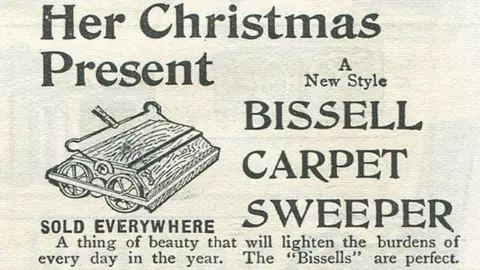 Alamy
Alamy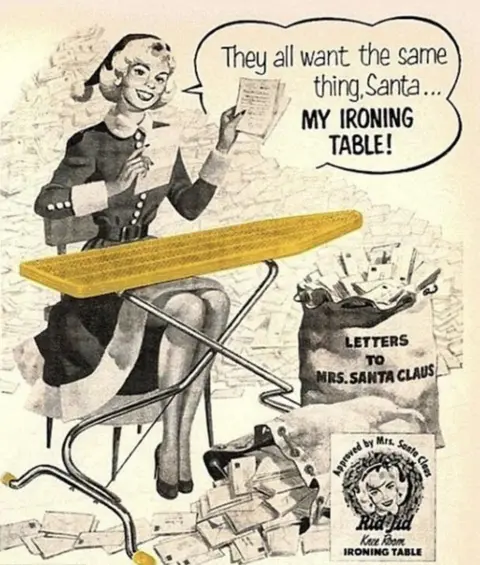 Alamy
Alamy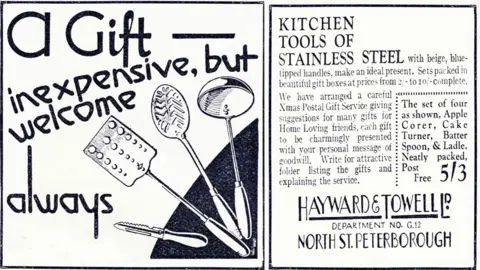 Alamy
AlamyIt wasn't all work work work, though.
Once the chores had been done, every good wife made herself attractive for her husband.
As one advert for hair tape (yes, hair tape) went: "When you were a little girl, receiving a Christmas doll was very important. Now being one is".
One for the women's libbers.
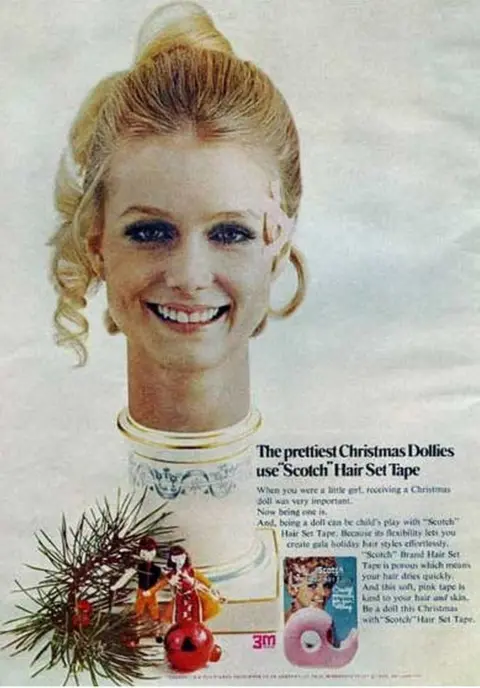 AFP
AFP
If that wasn't inspirational enough, there was also an array of lascivious Father Christmases to pander to.
Acceptable methods of keeping them happy seemingly included: wearing a transparent negligee while admiring Santa's shiny footwear (in an advert for boot polish); and trimming the tree while up a ladder wearing high heels, seamed stockings and a short skirt (in an advert for stockings, which came in sizes "tall, tiny and in-between").
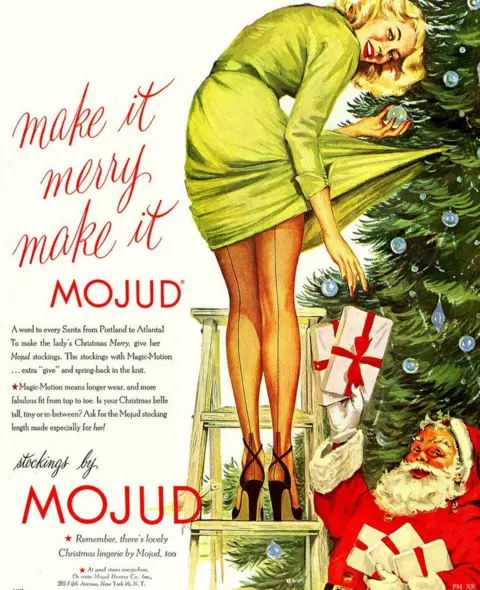 Alamy
Alamy
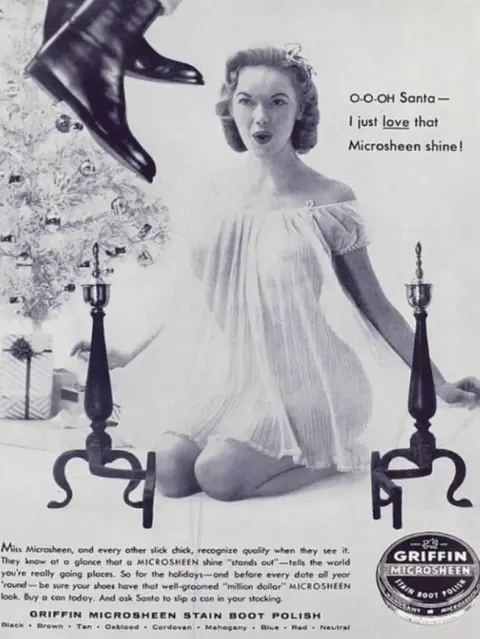 Alamy
Alamy
For those who felt their figures or faces were not up to scratch, there were plenty of aids on the market.
Nuns - not usually fans of cosmetics - were used to sell cases of perfumed toilet powder, while a company called Sargol tried to persuade women with their tablets that "well-developed bodies" were always admired, whether "at the theatre or in the ballroom".
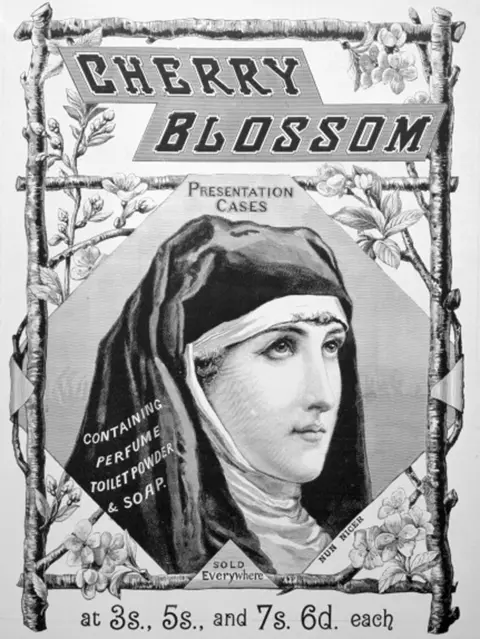 Getty Images
Getty Images
 Alamy
Alamy
Something for the man of the house
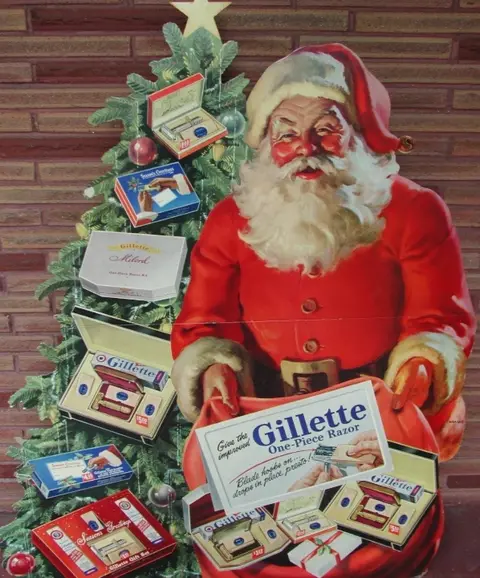 Getty Images
Getty Images
Once the house was spick and span, caring womenfolk would also ensure their husbands were comfortable and well-supplied with smoking paraphernalia and slippers.
But the man of the house would not receive gifts much more exciting than their wife's festive accumulation of spatulas.
Cigarettes in bulk, razor blades and nightwear were on the list.

You might also be interested in

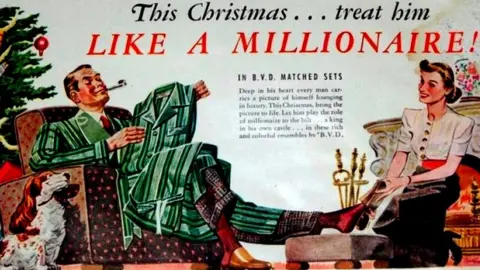 BVD
BVDMen are such simple folk, this advert suggests, that they desire nothing more than a "colourful ensemble" to feel "a king in his own castle".
Meanwhile, the gift of "a longer lifetime" can be provided by... smoking a pipe.
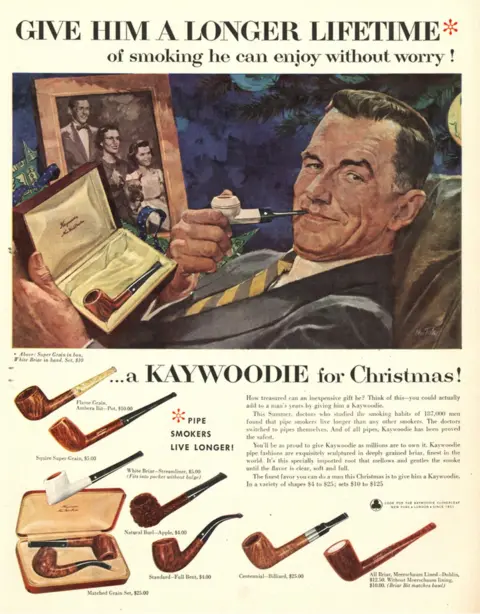 Alamy
Alamy
With a carefree disregard for accurate interpretation of statistics, the people at Kaywoodie announced that one can "add to a man's years" by giving him a pipe. All on the grounds that "doctors" found "pipe-smokers live longer than other types of smokers".
But presumably not longer than non-smokers.
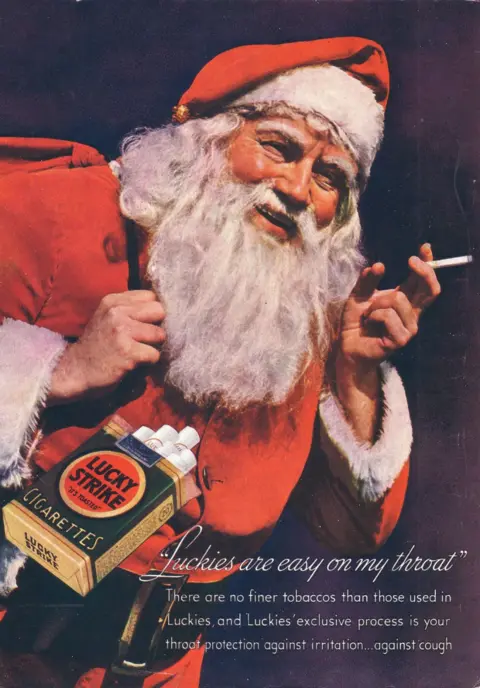 Getty Images
Getty Images
The crowd-pleasers
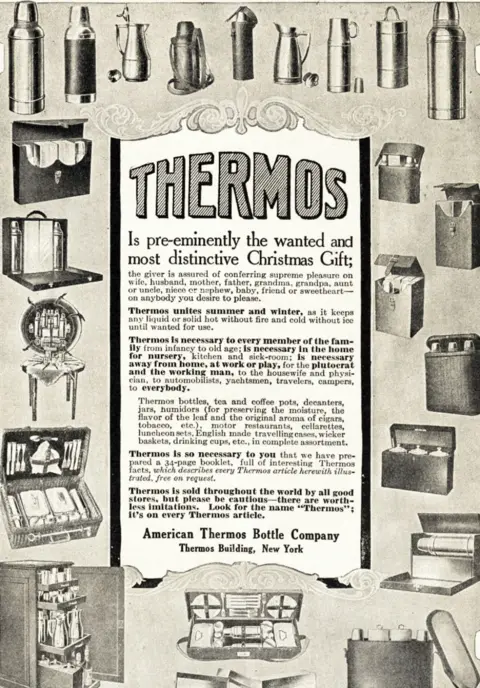 Alamy
Alamy
Some gifts were for all the family to enjoy.
There was literally no situation that could not be improved with a Thermos container, one advert suggests.
Whether buying a present for a yachtsman sweetheart or a physician uncle, Thermos had it covered.
Described as the receptacle that "unites summer and winter", perhaps the insulated items were best used in the autumn.
 Alamy
Alamy
Having a phone on a Christmas wish-list isn't merely a modern phenomenon.
The "hand-microphone" of 1933 - allegedly popularly known as the "handy" - was coveted by well-to-do Brits, who were urged to write to the General Post Office in London to order one.
"Both charming and permanently useful" as well as being "shapely in design and efficient in use", those lucky enough to own one could also buy a special cosy to keep it snug.
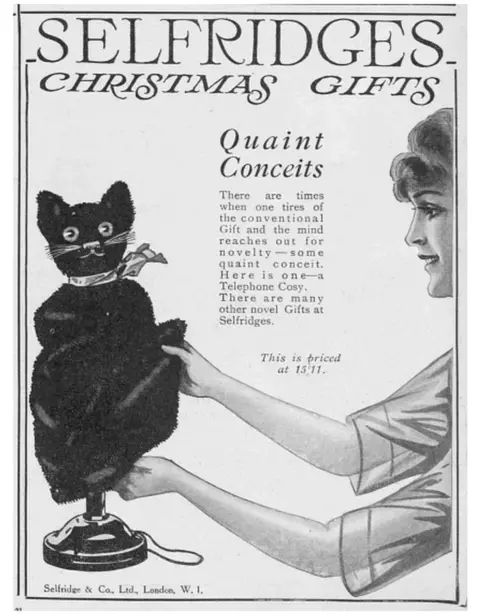 Selfridge and Co
Selfridge and Co
For the kids
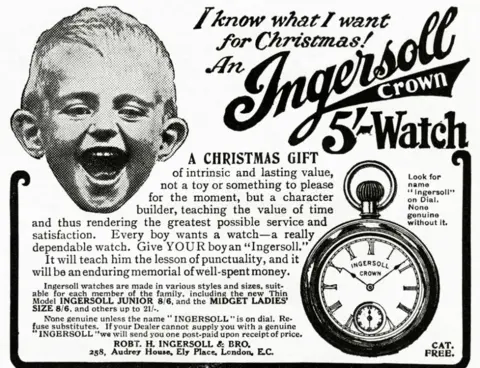 Alamy
AlamyChildren were in the position of receiving gifts that were both boring - like a box of handkerchiefs - to some that were frankly alarming.
The Gilbert glass-blowing kit provided "fascinating and instructive fun" while the company's other safety-unconscious pre-teen gifts included a molten lead-casting kit and a chemistry set with ingredients and instructions on how to make explosives.
 Alamy
AlamyThe Atomic Energy Lab, complete with radioactive samples, allowed children to create and watch nuclear reactions.
Among other activities, the lab set suggested "playing hide and seek with the gamma ray source", challenging players to a game using a Geiger counter to locate a radioactive sample hidden in a room.
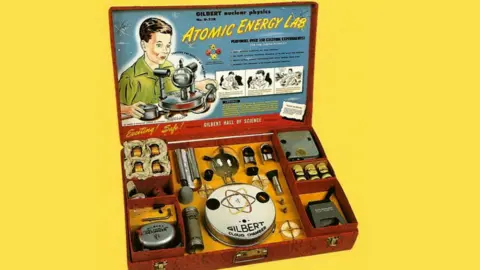 BBC
BBCHelpfully, also popped into the kit was a coupon for ordering replacement uranium and radium through the post.
Decades later, it was (perhaps unsurprisingly) described as "the world's most dangerous toy".
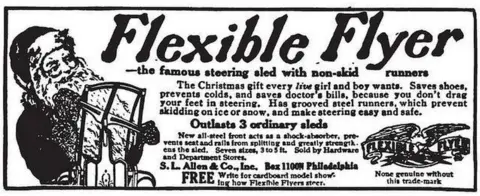 Alamy
AlamyLess "exciting!" but possibly more "safe!" than the Atomic Energy Lab was the traditional sled - the version marketed by SL Allen and Co was bafflingly aimed at every "live" girl and boy.
And moving further along the safety scale - although not completely without risk - was the Fox's Glacier Mint. Like most small, hard choking hazards, it was "the ideal gift for kiddies' parties" and would certainly aid "a digestive Christmas".
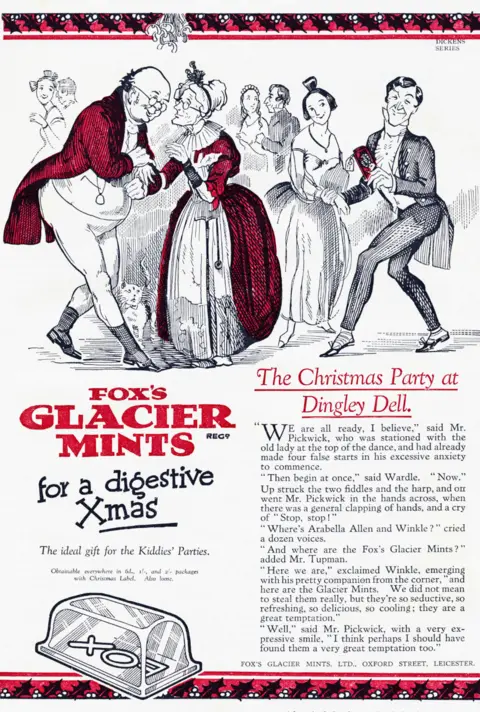 Alamy
Alamy
Food "glorious" food
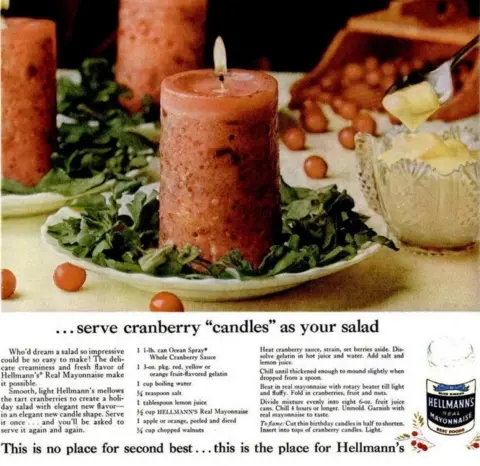 Alamy
Alamy
Unlikely to aid a digestive Christmas are these delights - an edible candle concocted from cranberry sauce, mayonnaise and gelatin, with a handful of walnuts chucked in to make the texture truly tempting.
And sophisticated housewives were urged to keep the treats flowing by encasing leftovers in jelly. Jell-o suggested putting sweetcorn, carrots and cauliflower in sweet lemon or lime flavour.
It may have been better to stick with the children's nuclear reactor.
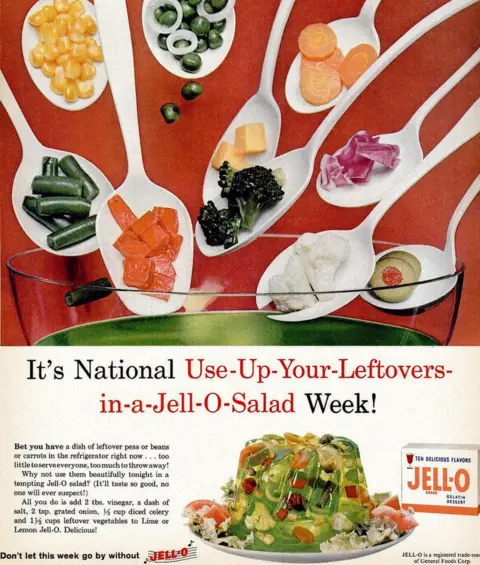 Alamy
Alamy
.
